- Home
- M. L. Buchman
Thunderbolt: an NTSB / military technothriller (Miranda Chase Book 2)
Thunderbolt: an NTSB / military technothriller (Miranda Chase Book 2) Read online
Thunderbolt
a Miranda Chase thriller
M. L. Buchman
Sign up for M. L. Buchman’s newsletter today
and receive:
Release News
Free Short Stories
a Free book
Get your free book today. Do it now.
free-book.mlbuchman.com
About This Book
The best ground-attack support fighter jets ever built—the A-10 Thunderbolt “Warthogs”—are falling out of the sky.
The Air Force brass repeatedly schemes to decommission this low-tech jet. They’ve been blocked by soldiers, pilots, and Congress…so far.
The “Hog” lies at the crux of a high-tech struggle for power. An interagency skirmish that now rapidly descends into a battle fought on a global scale.
Miranda Chase, air-crash savant for the National Transportation Safety Board, and her team dive in. The high-risk stakes mount in the battlespace—and a secret from their past could make them the next target. Miranda may become the spark that ignites a war.
Prologue
Spieden Island, Washington, USA
Elevation: 137’
Miranda Chase shooed a couple of sika deer off the runway. It was a chill November morning only a few degrees above freezing, so she didn’t spend long about it.
A slow wave of sea fog was rolling in from Vancouver and the Canadian Gulf Islands, adding a thick dampness to the chill. The first of the US San Juan islands, Stuart and Johns, were disappearing fast. If she didn’t get aloft in the next fifteen minutes, she’d be trapped here on Spieden Island until the weak November sun burned it off.
The call from the National Transportation Safety Board said that a new crash had been classified as urgent.
As if she would lag when there was a crash to investigate.
She opened the hangar door and began her pre-flight checklist at the pilot’s ladder, then circled the plane counterclockwise. Tires inflated and clear of obstructions. No leakage from the shock absorbers, brakes, or gear handling systems. No dings on the leading edge of the wings. All rote by now, but she never missed a step. She was her own ground crew, so it was up to her to make everything perfect.
Because of the frequent fog, she’d thought about installing an instrument landing system on her island. She liked that it would make Spieden one of the only grass strips in the world to have an ILS. The problem was that the outer and inner markers would have to be placed offshore in the deep waters of Puget Sound because, at two miles long and a half-mile wide, her island was too small to support the four-mile-long system.
Jones Island was in almost the right place, but it was a nature preserve that belonged to the state and they weren’t interested in having an ILS beacon set up there.
Besides, her plane couldn’t handle the Cat III equipment that would allow her to land in the exasperating near-zero visibility.
Her F-86 Sabrejet was neither pure North American F-86 Sabrejet nor the Canadair CL-13 Sabre Mk 5 variant anymore. One of the last ever produced before the line ended in 1958, she had tinkered with it over the years, including upgrading to the Mk 6’s more powerful Orenda 14 engine. She’d also had to make a few modifications so that she could start the plane herself—normally a ground crew was required to handle the power connections for engine start.
But even with the upgrades it was still all authentically a Sabrejet, and old jet fighters didn’t boast modern electronic suites. To shoehorn them in, she’d have to get a custom-designed cockpit—which was never going to happen. She loved the feel and familiarity of the old “steam” dial gauges mounted in the classic cockpit.
Her sole concession was a small tablet computer that attached to a Velcro strip on the right thigh of her flightsuit for GPS navigation and airport charts.
The preflight checks only took minutes. She rolled out onto the winter-dead grass as the first tendrils of fog began slipping across the field. Her time was shorter than she’d anticipated. She taxied ahead and punched the garage controller to close the hangar door. Normally, even though she lived alone on the island, she’d get down and padlock it from the outside. But this morning the fog was moving in fast.
Isolate.
Focus.
The island would be uninhabited by humans as soon as she was aloft.
Locking the door really didn’t matter.
You’re taxiing the airplane. Work the checklist.
Fuel tanks full.
Canopy Unsafe alarm dark.
Speed brakes retracted.
The sika deer were back, grazing along the runway as if antique fighter jets rolled by them all the time. They’d never yet run across the runway during a takeoff or landing, but she did hate disturbing their quiet island existence. They were startled every single time by the full-throttle roar of her turbojet engine.
She loved the deer. They were among the island’s many survivors from when Spieden had been set up as a big-game-hunter resort decades ago. Thankfully the zebras, the far larger European fallow deer, and the like were long gone.
Some of the other remaining wildlife she was less pleased about. The incredibly territorial wild turkeys really needed to be cleared out.
There was one particular tom she’d named Dillinger. Especially fond of the acoustics of her front porch—he frequently launched his shrill call there at two in the morning. So far, he had eluded her efforts at capture or kill.
Perhaps she’d throw a hunting party. Which would include herself and…
“You really need some friends,” Miranda could hear Tante Daniels teasing her. She had been doing that since she had been Miranda’s governess, even more so since Miranda’s parents had gone down on flight TWA 800 and she’d become the then thirteen-year-old Miranda’s guardian.
Quite why Tante Daniels so enjoyed teasing, despite knowing better than anyone how much it confused Miranda, was beyond her. At least Miranda found teasing to be more easily identifiable than sarcasm. Why some people thought that double meaning was somehow a more efficient way to communicate was beyond her.
At the end of the runway, she turned her jet around and performed the final checks.
Flaps to takeoff.
Trim two percent nose-up attitude.
Altimeter to one hundred and thirty-seven feet to match the height of the northwest end of the runway.
The orange windsock drooped. Winds calm.
Miranda snapped in the oxygen mask, as she would be flying high, and tucked the tail of her helmet strap inside the chin strap so that it wouldn’t tap against her cheek every time her jet hit an air pocket.
She called out her departure on the Unicom frequency in case anyone was in the area.
“Spieden Traffic. Sabrejet N19353 VFR departing to the southeast.”
Miranda felt a satisfying sense of rightness with her custom tail number.
Airplane identifier N-Numbers painted on a plane’s tail had only five characters—of which the first three had to be numeric. So, she’d started with the first five letters of the Kryptos sculpture in the CIA headquarters courtyard that she and her father had spent much of her childhood years trying to decrypt. She’d applied the Vigenère cipher (the same one used by the NSA and the CIA to decode the first two panels of the sculpture) using the word “Kryptos” itself just as the artist had when he’d initially encoded it.
KRYPT had become UIWEM once enciphered.
Rather than re-encoding that with a second word—“palimpsest” and “abscissa” respectively on the sculpture’s first two panels—she’d applied the first alphanumeri
c encryption method her father had ever taught her. By using only the last number of each letter’s position in the alphabet, 21-9-23-5-13, UIWEM had become 19353.
The custom N-Number was available from the FAA and she’d gladly paid the ten-dollar custom-number fee. The accompanying 20201 decryption key, for the tens place of 21-09-23-05-13, she’d ordered as a custom license plate for the island’s tractor, which she mainly used for mowing the runway. Sometimes it worried her that someone would decode the two together. Each time she reminded herself that it wouldn’t cause any problems if they did.
Her radio announcement was only a little unusual, as no other traffic ever flew here—except the one time she’d invited her team to visit—but it was in the FAR, and even if she was the only person she’d ever met who regularly read the complete Federal Aviation Regulations, she did her best to follow them at all times.
Rules were comfortable.
She liked rules.
They gave a structure to the chaotic world.
Miranda paused for five seconds to listen for a response from some other flier stating that her departure might be a problem for them. There was no recommended waiting time, not even in the recent Non-Towered Airport Flight Operation advisory circular AC 90-66B. It was the first update since 1993 and she found it uncomfortable that it had no listening duration mentioned, just like its predecessor 66A.
Uncomfortable? Perhaps annoying was a better word. She reminded herself that she was getting better at identifying emotions, even when it didn’t feel like it. At least the labels made them more tolerable.
She found it annoying that, as one of the lead NTSB accident investigators, she had reported on three separate accidents caused by a pilot who failed to allow sufficient time between an announcement and subsequent action. Three separate times she’d recommended that the FAA change their rules to include the five-second pause, but the National Transportation Safety Board only had the power to recommend, not to require.
Hearing nothing, she checked the skies once more before pressing her toes hard on the footbrakes and sliding the throttle forward. As the Orenda 14 engine crossed twenty percent power, she released the footbrakes and the Sabrejet instantly began to roll.
The deer looked up in alarm and bolted for the Doug fir woods as always.
And there was Dillinger.
The male turkey scowled at her from a low hedgerow she’d recently planted near the hangar, but he didn’t move. Maybe he had a stealth coating he used whenever she was out with a rifle or bow.
At a hundred and forty-five knots (a hundred and sixty miles an hour), she let the nose wheel lift. At one-fifty, she was wheels-up ahead of the first bank of fog prowling in through the conifers to the west. She tapped the brakes to stop the wheels from spinning, then retracted the landing gear.
Aloft, she was in clear blue skies.
Contacting Seattle Air Route Traffic Control Center, she initiated her filed flight plan and arranged for a fast climb to her best cruise height of thirty-one thousand feet. Now the only question was how fast could she get to Davis-Monthan Air Force Base outside Tucson, Arizona. It was illegal to fly over US soil at greater than Mach 1—an ability just within the performance envelope for her aircraft—but the law didn’t say anything about flying at ninety-nine percent of the speed of sound.
She would cross from Washington to Arizona in under two hours. Once again, her team would unavoidably follow hours behind.
The wreck awaited and the NTSB team was on its way.
She waved goodbye to the island and punched south.
Achin, Nangarhar Province, Afghanistan
Flight Level 25: 25,000’
Nine hours earlier
“MC-squared heading down.”
Major Carl Carmichael said it aloud in the cockpit just to see how it sounded. He still wasn’t used to his new call sign—“MC-squared” had replaced his “Three-C” nickname almost overnight after his promotion from Captain Carl Carmichael to major two weeks ago. Most guys just got one nickname in a career, but his seemed to keep changing and needed some rethinking each time.
Riding the edge of the never-exceed speed, he dove his A-10C Thunderbolt II “Warthog” down from Flight Level 25.
The bitch-cold November sky over the Afghan mountains was a hard, crystalline blue that looked as if it would crack where the sharp glaciated peaks jammed against it. It had that dark purity of midmorning.
It was still dark down in the deep valleys. Real dark for some assholes once he showed up.
“Straight on down, boy. Straight on down.”
Twenty-five thousand feet at four hundred and fifty knots (five hundred and eighteen miles an hour) meant thirty-five seconds to target. Actually thirty-one seconds as the ground elevation in the rugged front range of the Safēd Kōh Mountains was above three thousand feet.
A full dive in a Warthog was the best ride there ever was.
The design was fifty years old and his plane was forty. It was still the most kick-ass jet ever. The only plane in the US arsenal dedicated to close air support for ground troops.
Nothing touched it.
“Energy like light, we’re kicking it with MC-squared according to old Einstein. Moving like the A-10 Thunderbolt we are, Nancy.”
The action figure perched on the top of his flight console didn’t reply; she just grinned as he worked on how best to use his new call sign.
The hop from Bagram Airfield a hundred kilometers away had taken only seven minutes and he was almost there. He’d crossed the desert flats and the rugged gray hills of the east.
As usual, command had ignored the unofficial Warthog motto: Go ugly early. The A-10 was a seriously homely plane, but it totally rocked. And the best way to help ground troops was to get a hog there before they were getting their asses kicked.
If they’d called him in before the squad of 75th Rangers had gotten pinned down and cornered in the brutal mountains outside the Afghani village of Achin, they wouldn’t be in such desperate straits now.
Total airworthy F-35 Lightning II’s at Bagram who could get there in a third the time he could? Zero. He’d be sure to rub that in at the DFAC tonight over steak and baked potatoes.
And the F-18 Hornets sucked for ground attack—at least compared to a Warthog—which is why he and his sweet old bird still had a job.
Medevac helos had launched at the same time he had but, even slower than a Hog, were still twelve minutes-forty out. In twelve minutes there wouldn’t be any need for the helos because there’d be no one left for the medical teams to rescue.
…If those rotorboys even dared fly into the valley filled with Taliban.
“No worries, boys and girls. Nancy and I are on the job.”
His high-res thermal tracker let him catalog the situation quickly.
The Taliban were dug in on two different hilltops, pinning down the Rangers in the crossfire while their pals chased the good guys up a dead-end valley.
“Nasty little Talis. Let’s get ’em, Nancy.”
A cliff wall behind the Rangers and a platoon-size phalanx of Afghani ragheads coming at them fast had to suck.
“Ug-ly! That’s the only word for it, Nancy. The only word. Ug-ly!”
A line of three broken US Army vehicles scattered in between the two ground forces said that the Rangers were probably now on foot, whereas the Taliban were still mostly mounted.
Technicals—pickups with heavy machine guns and even artillery mounted in the back—totally sucked. They had six of those, one for every two Rangers.
“Twelve minutes to get it all cleaned up, Nancy.”
His sister was a bestselling romance novelist who worshipped Nancy Pearl—a major Seattle librarian who had encouraged Sis since early in her career.
When Carl had graduated from the Air Force Academy, Sis had given him the Nancy Pearl figurine. Ever since, he and Nancy had flown together. With short graying hair, big glasses, and a bigger smile, she was kinda sexy in her tight plastic top and red cape.
She’d begun her flying looking out the windshield, but when he’d found himself wondering about her ass hidden by the flowing cape, he figured it was better if she kept an eye on him.
At fifteen thousand feet up, he lased one hilltop gun emplacement and fired off a laser-guided AGM-65 Maverick air-to-surface missile. It would take care of that group in another fifteen seconds.
At ten thousand, he lased the other hilltop and kicked off his other Maverick.
Now he was getting some attention from the ground. The bad kind of attention, but he was ready for it.
“Time to do our dance, Nancy.”
He jinked sideways and flipped through a hard wing-over-wing twist as he dove around the back side of the western ridge. From above he’d seen that the valley along the back of the ridge turned and led back up the valley the Rangers were pinned down in.
The two hilltops blew simultaneously.
“Ranger Ground to A-10. Nice shooting.”
“Hold tight, boys, Nancy and I are comin’ at you just like light.”
Not bad. Still a little clunky. Had to be some better way to use his new call sign.
An A-10 Warthog’s real strength wasn’t its heavy armor—though Carl appreciated the well-fortified cockpit every time someone got a bead on him. Nor was it in the variety of bombs and missiles hanging from the eleven hardpoints on the hog’s wings and fuselage.
The plane rocked the ground assault role because it had been built starting with a gun.
A damned big gun.
At its heart, the A-10 was two tons of 30 mm GAU-8/A Avenger rotary cannon that just happened to have a tough-as-hell twin-engine jet built around it. Each second it could deliver seventy inch-and-a-quarter by four-inch, high-explosive rounds at three times the speed of sound.
The Talis were about to have their line shredded.
“Ready, Nancy?”
He carved a hard turn at the valley junction over the crap town of Achin—half-a-hundred homes squatting among steeply terraced fields. Anybody who wasn’t Taliban was probably al-Qaeda.

 White Top
White Top Thunderbolt
Thunderbolt Storm's Gift
Storm's Gift The Complete Delta Force Shooters
The Complete Delta Force Shooters At the Quietest Word (Shadowforce: Psi Book 2)
At the Quietest Word (Shadowforce: Psi Book 2) At the Slightest Sound
At the Slightest Sound Dilya's Christmas Challenge
Dilya's Christmas Challenge Raider
Raider Havoc
Havoc Carrying the Heart's Load
Carrying the Heart's Load Flying Beyond the Bar
Flying Beyond the Bar Firelights of Christmas
Firelights of Christmas Where Dreams Are Well Done
Where Dreams Are Well Done Nathan's Big Sky
Nathan's Big Sky Heart of a Russian Bear Dog
Heart of a Russian Bear Dog Drone: an NTSB / military technothriller (Miranda Chase Book 1)
Drone: an NTSB / military technothriller (Miranda Chase Book 1) Flower of Destiny
Flower of Destiny Drone
Drone Ghostrider: an NTSB-military technothriller (Miranda Chase Book 4)
Ghostrider: an NTSB-military technothriller (Miranda Chase Book 4) Wild Fire
Wild Fire Team Black Sheep
Team Black Sheep The Complete Delta Force Warriors
The Complete Delta Force Warriors At the Quietest Word
At the Quietest Word At the Merest Glance
At the Merest Glance Havoc: a political technothriller (Miranda Chase Book 7)
Havoc: a political technothriller (Miranda Chase Book 7) White Top: a political technothriller (Miranda Chase Book 8)
White Top: a political technothriller (Miranda Chase Book 8) Between Shadow and Soul
Between Shadow and Soul Island Christmas
Island Christmas Survive Until the Final Scene
Survive Until the Final Scene Midnight Trust
Midnight Trust Return to Eagle Cove
Return to Eagle Cove Where Dreams Reside
Where Dreams Reside Honor Flight
Honor Flight Where Dreams Are Sewn
Where Dreams Are Sewn The Complete Hotshots
The Complete Hotshots Condor
Condor I Own the Dawn
I Own the Dawn Chinook
Chinook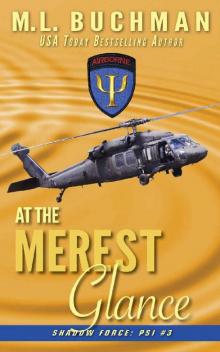 At the Merest Glance: a military paranormal romance (Shadowforce: Psi Book 3)
At the Merest Glance: a military paranormal romance (Shadowforce: Psi Book 3) Since the First Day
Since the First Day Thunderbolt: an NTSB / military technothriller (Miranda Chase Book 2)
Thunderbolt: an NTSB / military technothriller (Miranda Chase Book 2) For Her Dark Eyes Only
For Her Dark Eyes Only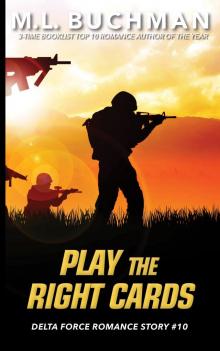 Play the Right Cards
Play the Right Cards Lost Love Found in Eagle Cove
Lost Love Found in Eagle Cove Big Sky Ever After: a Montana Romance Duet
Big Sky Ever After: a Montana Romance Duet Keepsake for Eagle Cove
Keepsake for Eagle Cove At the Clearest Sensation
At the Clearest Sensation The Ides of Matt 2015
The Ides of Matt 2015 When They Just Know
When They Just Know Cave Rescue Courtship
Cave Rescue Courtship Wildfire at Dawn
Wildfire at Dawn Dawn Flight
Dawn Flight Blaze Atop Swallow Hill Lookout
Blaze Atop Swallow Hill Lookout The Sword of Io
The Sword of Io Christmas at Steel Beach
Christmas at Steel Beach Heart's Refuge
Heart's Refuge By Break of Day (The Night Stalkers)
By Break of Day (The Night Stalkers) Kee's Wedding
Kee's Wedding Just Shy of a Dream
Just Shy of a Dream Path of Love
Path of Love Ghost of Willow's Past
Ghost of Willow's Past Flash of Fire
Flash of Fire Target of the Heart
Target of the Heart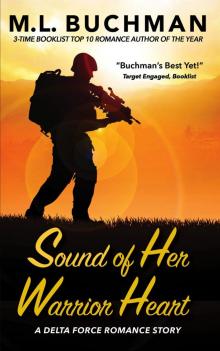 Sound of Her Warrior Heart
Sound of Her Warrior Heart Target of Mine: The Night Stalkers 5E (Titan World Book 2)
Target of Mine: The Night Stalkers 5E (Titan World Book 2) The Complete Where Dreams
The Complete Where Dreams Target of One's Own
Target of One's Own For All Their Days
For All Their Days Pure Heat
Pure Heat Love's Second Chance
Love's Second Chance Target Engaged
Target Engaged Bring On the Dusk
Bring On the Dusk Wait Until Dark (The Night Stalkers)
Wait Until Dark (The Night Stalkers) Big Sky, Loyal Heart
Big Sky, Loyal Heart Welcome at Henderson's Ranch
Welcome at Henderson's Ranch Damien's Christmas
Damien's Christmas Flight to Fight
Flight to Fight Nara
Nara Looking for the Fire
Looking for the Fire Love Behind the Lines
Love Behind the Lines Peter's Christmas
Peter's Christmas In the Weeds
In the Weeds Christmas at Henderson's Ranch
Christmas at Henderson's Ranch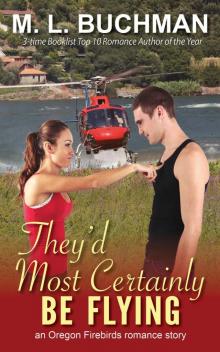 They'd Most Certainly Be Flying
They'd Most Certainly Be Flying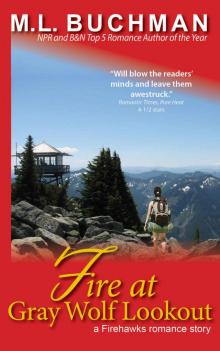 Fire at Gray Wolf Lookout (Firehawks Book 8)
Fire at Gray Wolf Lookout (Firehawks Book 8) Wildfire on the Skagit (Firehawks Book 9)
Wildfire on the Skagit (Firehawks Book 9) A Hotshot Christmas
A Hotshot Christmas Off the Leash
Off the Leash Where Dreams Books 1-3
Where Dreams Books 1-3 Guardian of the Heart
Guardian of the Heart The Ides of Matt 2017
The Ides of Matt 2017 Where Dreams Unfold
Where Dreams Unfold Twice the Heat
Twice the Heat Wild Justice (Delta Force Book 3)
Wild Justice (Delta Force Book 3) Flying Over the Waves
Flying Over the Waves Love in the Drop Zone
Love in the Drop Zone I Own the Dawn: The Night Stalkers
I Own the Dawn: The Night Stalkers What the Heart Holds Safe (Delta Force Book 4)
What the Heart Holds Safe (Delta Force Book 4) The Christmas Lights Objective
The Christmas Lights Objective Road to the Fire's Heart
Road to the Fire's Heart Night Rescue
Night Rescue Delta Mission: Operation Rudolph
Delta Mission: Operation Rudolph Full Blaze
Full Blaze Night Is Mine
Night Is Mine Lightning Strike to the Heart
Lightning Strike to the Heart Beale's Hawk Down
Beale's Hawk Down Circle 'Round
Circle 'Round Cookbook from Hell Reheated
Cookbook from Hell Reheated Zachary's Christmas
Zachary's Christmas Reaching Out at Henderson's Ranch
Reaching Out at Henderson's Ranch Fire Light Fire Bright
Fire Light Fire Bright The Ides of Matt 2016
The Ides of Matt 2016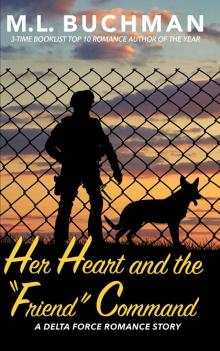 Her Heart and the Friend Command
Her Heart and the Friend Command On Your Mark
On Your Mark Swap Out!
Swap Out! Heart of the Cotswolds: England
Heart of the Cotswolds: England The Phoenix Agency_The Sum Is Greater
The Phoenix Agency_The Sum Is Greater Wildfire at Larch Creek
Wildfire at Larch Creek Target Lock On Love
Target Lock On Love Second Chance Rescue
Second Chance Rescue Where Dreams Are Written
Where Dreams Are Written First Day, Every Day
First Day, Every Day Christmas at Peleliu Cove
Christmas at Peleliu Cove Heart Strike
Heart Strike Man the Guns, My Mate
Man the Guns, My Mate Emily's Wedding
Emily's Wedding Daniel's Christmas
Daniel's Christmas Frank's Independence Day
Frank's Independence Day The Phoenix Agency: The Sum Is Greater (Kindle Worlds Novella)
The Phoenix Agency: The Sum Is Greater (Kindle Worlds Novella) Roy's Independence Day
Roy's Independence Day